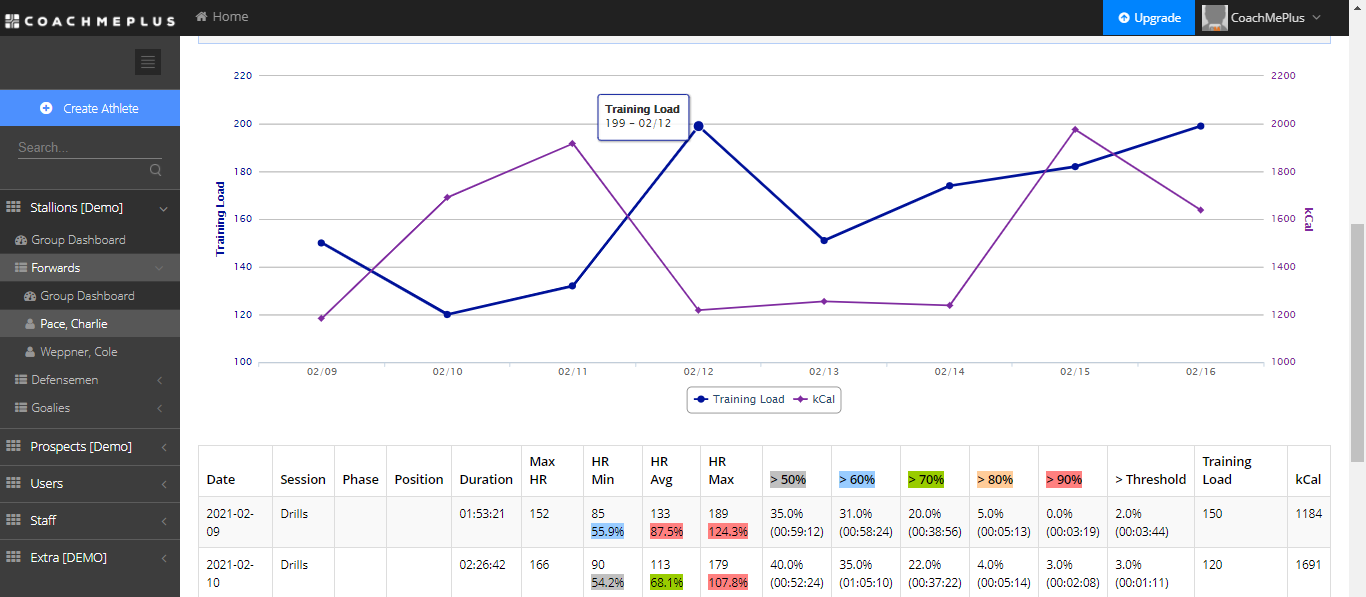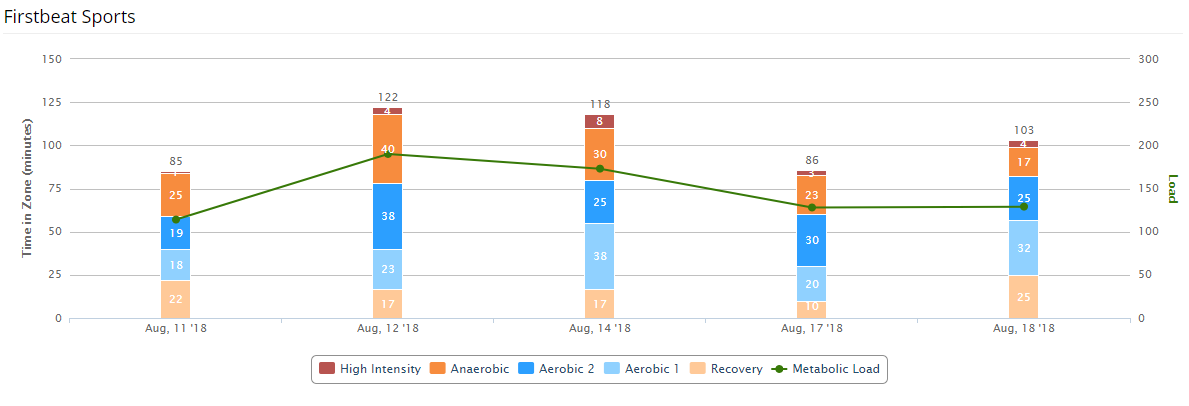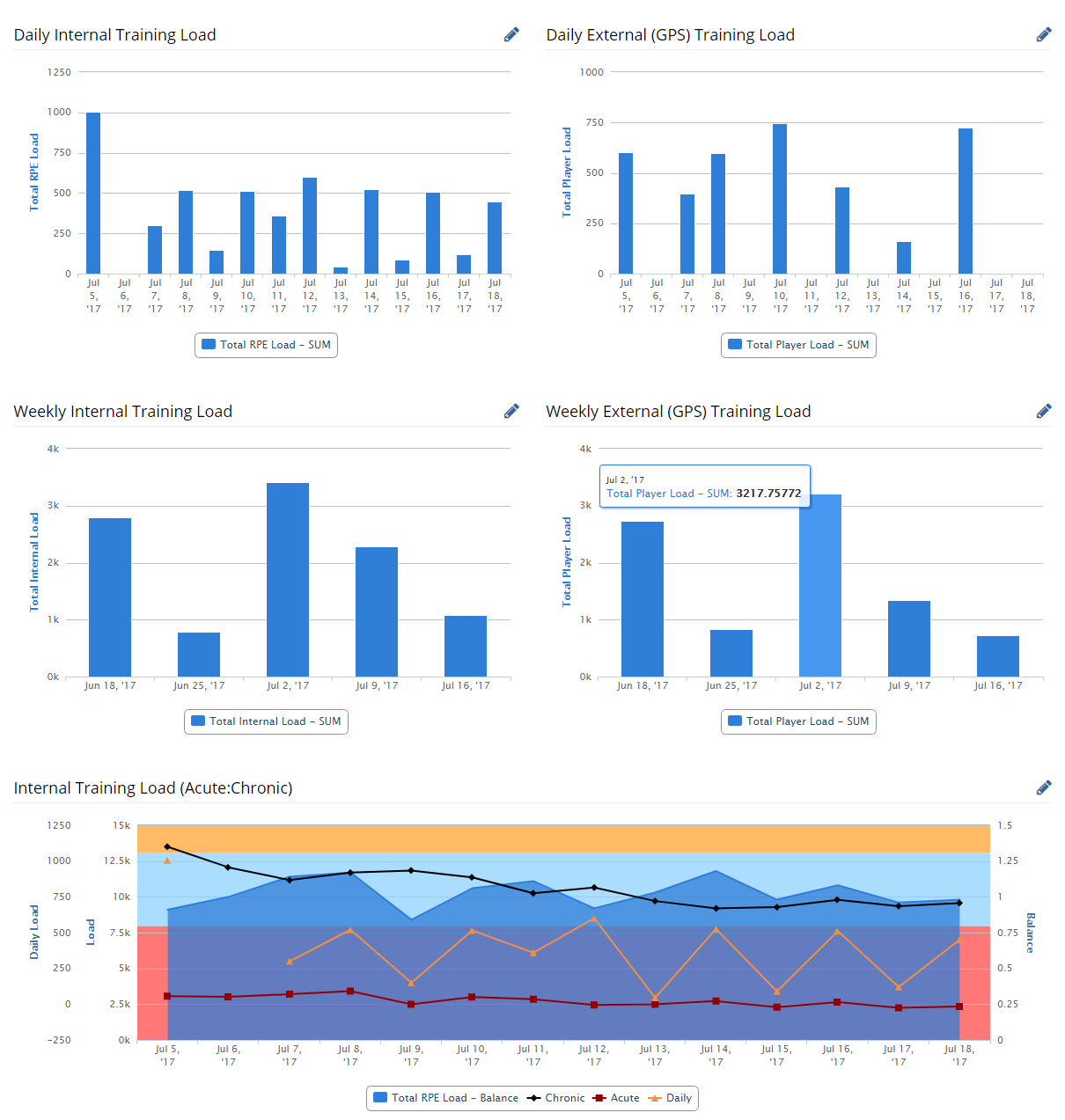Measuring the work done in team sports is a complex challenge facing performance staff, as well as sport scientists and sports medicine professionals. Tracking movement and estimating workload are growing responsibilities in professional, university, and even youth levels today. Regardless of the technology used, the primary role of tracking systems is to enable staff to use automation to quantify the work athletes perform daily. Camera and wearable technologies do have similarities and differences though, and training outside of the practice grounds should also be considered.
This Academy Guide covers an array of applied methods to objectively monitor athlete output, and explains how the data can be used. Sports technology is constantly evolving and improving, and the options to measure and track athlete workloads are more accurate and valid than they were a few years ago.
Goals of Player Tracking and Game Surveillance
Player availability for the most talented and skilled athletes is the primary concern of elite sport, but player development is also an opportunity with lower levels. It’s fairly straightforward that the goals of player tracking are to improve the outcomes of winning by reducing errors in loading and to evaluate athlete positioning for technical performance. Player tracking is very similar to video analysis, but offers novel ways to quantify the work done by players and estimate the impact of contact sports that video simply can’t provide. Great advancements with an interdisciplinary approach are changing the preparation of players. Tactical and technical elements of sport are now integrated into the physiological and biomedical responses of training.
Reducing injury is the priority with most support staff, and if an athlete is injured, player tracking technology improves a return to performance or return to play plan. Visualizing athlete load is an essential step to informed coaching. There is an array of science-guided approaches to managing the daily loading, including specialized ratios and rolling average calculations. Still, all of the available monitoring calculations are based on simple workload volumes over time, and have yet to evolve past groupings of work type and enter the realm of anatomical risk. High speed and distance traveled do have relevance to hamstring injury, and deceleration could potentially connect to joint injuries to the lower extremities.
Improving success in sports requires tracking of the ball and puck in order to create context to player motion. Player health and player performance are critical to success, but the necessary strategy and skill for playing the sport requires context that is beyond just measuring player workload. Tracking the ball now, and estimations of athlete decision-making down the road, will improve how teams are able to combine tactical needs and training load management.

Scientifically Valid Measurements
Hardware, signal processing, and visualization all play a role in accurately depicting what is happening on the field, and much of the limitation is hardware miniaturization and the calculations used to estimate work type, rate, and magnitude of the load. Most wearable options in sports technology utilize GPS (global positioning system) and IMUs (inertial measurement unit) to track and measure general sports activity, such as the distance of running, speeds achieved in practice or games, and sometimes impact and detection of specific action such as scrum activity. The majority of systems utilized in sports tracking concentrate on summaries of the entire body, as their wearables are placed on the torsos of players. A recent growth in the foot sensor market indicates that proxy measures of ground reaction forces are desirable, and an increased number of smart insoles and wearables are now available.
GPS Unit
A high sampling rate, measured in Hz, generally improves the accuracy and precision of the speed an athlete is reaching and the specific location of the athlete. The relatively low cost of GPS sensors enables hardware costs to be affordable for lower levels of sport. Research supports the use of higher sampling rate options as a reliable and accurate measurement of athlete location and speed.
Accelerometers
The sensors used on wearables detect small changes in acceleration of the athlete’s body, and they can also perceive impacts from athlete-to-athlete collisions. In conjunction with the GPS, the addition of accelerometry is useful for estimating total body load, commonly referred to as player load. Each company typically provides a unique metric, and validation studies must be done to verify that it’s accurate compared to other standards. Acceleration and deceleration measurements and tracking, or highly eccentric actions in sport, are dependent on tri-axial accelerometers.
Magnetometer
Directional orientation measurements add reliability to wearable sensors because the technology is not dependent on satellites. Digital magnetometers add robustness to the calculations and estimations of work, but don’t provide additional details to loading of the body. Due to their usefulness in adding directional awareness, it’s now standard to include magnetometers in nearly every sensor kit.
Gyroscope
Body orientation is another variable that improves the ability to detect how athletes are directing and redirecting their body. An athlete bending over at the hip or sliding on their back may indicate a tackle. Adding data from gyroscopes increases the validity of custom metrics and the estimations of work and activity.
Other Options
Other sensors are available, but those measurements are typically either environmental or physiological in nature. Thus, they are responses to activity rather than estimates of the activity itself. Besides the responsibilities of collecting athlete data, current products allow for the device to act as a hub to transmit other data sets. In addition to the microsensors used internally, the wearable market RFID, local network, and optical approaches to player tracking require enormous quantities of cameras and hardware to track motion. Cameras and networks that do not employ variables have more indirect measurements, and their calculations don’t yet have the same standardization as microsensors.

Analysis and Artificial Intelligence
Recent advancements in data science and artificial intelligence, specifically with sports tracking measurements, could lead to major breakthroughs. The potential to minimize injury risk and find competitive advantages tactically is possible with neural networks, genetic algorithms, and machine learning. Simple metrics are more accessible, as they don’t require large data volumes and are easy to apply in training programs.
Most visualizations summarize the daily totals of relevant measurements, such as distance covered, high-intensity actions, peak velocity, change of direction information, and even impact and jump detection with some systems. Additional visualizations that combine both the response and perception of training are often used with dashboards and reports, specifically wellness surveys and heart rate data. Multiple types of data can be layered into charts and graphs, and it’s common that coaches and support staff all have access to each practice session’s data. Game or match data is also reviewed to see how practices and competition are interacting from both physiological and tactical perspectives.
Most modeling performed in elite sport is limited to the data collected, not the statistical or artificial intelligence employed. Biomechanical models of performance—those that can augment performance or help with sport skill acquisition—require large amounts of data points tracked from the player’s body, and very little motion capture is currently accessible beyond an estimate of the athlete’s center of mass. Sports technology hints at even more levels of granularity in the future, but the models are currently limited to simple summaries of player motion and work.

Non-Practice Workload Tracking and Management
The most neglected area in monitoring the load of the team sport athlete is training outside of the confines of the pitch, court, rink, or practice fields. External workloads are mainly practice loads, but strength training and general conditioning must be considered in order to properly track and model training programs. Past measurements were usually limited to total volumes of kilograms or pounds, but those were convenient estimates of work performed, as the interaction between on-the-field training and strength training is not easily reconciled.
Attempts to quantify training, whether contacts with plyometrics, barbell work with velocity-based training devices, or sprinting outputs, have all led to progress in sports science. What is unknown is how sequencing, progressing, and tapering interact with practices and games. In the future, the research and applied practice needs a multivariate approach to understand the following.
- How the time course of all forms of training can be optimized to improve player health.
- What tactical and technical styles increase and decrease risk to injury and overtraining.
- Why non-responders to specific training programs fail to adapt to the routines used by coaches.
- What strength training strategies improve performance while concurrently minimizing injury.
- Which athletes can benefit from additional training and which may need prescribed rest.
Limitations and Challenges with Technology
The advancements in player tracking have come with well-known issues over the reliability and consistency of legacy data, as well as legal restrictions. In some professional sports, the unions and governing bodies restrict the use of systems during games, or do not have uniform guidelines throughout their respective leagues. Improvements to the technology are even more of a problem, as past systems produced different data, making season-by-season comparison nearly impossible.
User experience with wearables is also a factor. Players who are required to wear microsensors often find the garments uncomfortable and sometimes complain that they interfere with natural movement. Finally, the systems are usually indirect measures of force and work, and only represent the athlete in a summary for estimation purposes. Some measures are very accurate, like a peak sprinting velocity, but others are less precise and subject to scrutiny, such as left-right leg symmetry during running and other activities.

Recent Comments